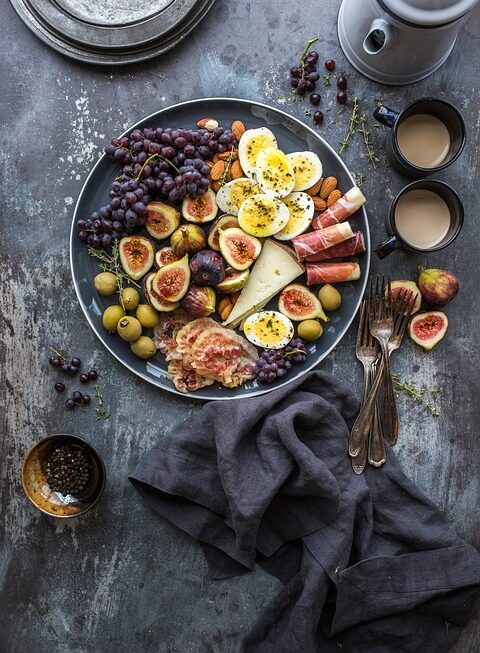Stuffed peppers – vibrant, flavorful, and surprisingly versatile. More than just a meal, they’re a canvas for culinary creativity, a delightful way to sneak in extra vegetables, and a crowd-pleaser that’s equally at home at a casual weeknight dinner or a potluck gathering. This guide will unlock the secrets to crafting the perfect stuffed peppers, from selecting the right peppers to mastering flavor combinations and even exploring exciting variations. Get ready to elevate your stuffed pepper game!
Choosing the Right Peppers
Pepper Varieties and Their Characteristics
The foundation of a great stuffed pepper starts, of course, with the pepper itself. While green bell peppers are the most common choice, exploring other varieties can dramatically impact the flavor profile of your dish.
- Green Bell Peppers: Offer a slightly bitter, earthy flavor and are readily available. They hold their shape well during baking, making them a reliable choice.
- Red, Yellow, and Orange Bell Peppers: Sweeter and more vibrant than green bell peppers, these options add a touch of sweetness and visual appeal.
- Poblano Peppers: Milder than jalapeños, poblano peppers offer a subtle heat and a slightly smoky flavor. They’re often larger than bell peppers, allowing for more filling.
- Anaheim Peppers: Similar to poblanos in heat level, Anaheim peppers are slightly longer and thinner. They’re a good option for those who prefer a less bulky stuffed pepper.
Selecting the Perfect Pepper
When choosing your peppers, look for:
- Firmness: Peppers should be firm to the touch, not soft or wrinkled.
- Smooth Skin: Avoid peppers with blemishes, cuts, or bruises.
- Heavy Weight: A heavier pepper indicates more flesh and juiciness.
- Uniform Shape: Choose peppers that stand upright easily, making them easier to stuff and bake.
Preparing the Peppers
Proper preparation is key to ensuring your stuffed peppers cook evenly and taste their best.
Halving: Cut the peppers in half lengthwise, from stem to tip. Remove the seeds and membranes. This method is ideal for showcasing the filling.
Topping: Cut off the top of the pepper around the stem. Remove the seeds and membranes. This method allows the peppers to stand upright and hold a generous amount of filling.
Crafting the Perfect Filling
Base Ingredients
The filling is where you can truly express your culinary creativity. However, a well-balanced filling typically includes a few key components:
- Protein: Ground beef, ground turkey, Italian sausage, lentils, quinoa, or black beans.
- Grains: Cooked rice (white, brown, or wild), quinoa, barley, or couscous.
- Vegetables: Onions, garlic, diced tomatoes, corn, zucchini, mushrooms, or spinach.
- Sauce/Binder: Tomato sauce, marinara sauce, broth, or a combination.
- Cheese (Optional): Mozzarella, cheddar, Monterey Jack, or Parmesan cheese.
Flavor Combinations and Seasoning
Experimenting with different flavor combinations can elevate your stuffed peppers from ordinary to extraordinary.
- Classic Italian: Ground beef or sausage, rice, diced tomatoes, mozzarella cheese, Italian seasoning, garlic, and onion. Add a sprinkle of parmesan before baking.
- Mexican Fiesta: Ground beef or turkey, rice, black beans, corn, salsa, cheddar cheese, cumin, chili powder, and a touch of cayenne pepper. Top with a dollop of sour cream and guacamole after baking.
- Mediterranean Delight: Ground lamb or lentils, rice, spinach, feta cheese, Kalamata olives, sun-dried tomatoes, oregano, and lemon juice.
- Vegetarian/Vegan Option: Quinoa, black beans, corn, diced tomatoes, zucchini, bell peppers, vegan cheese, chili powder, and cumin.
Don’t be afraid to adjust the seasonings to your liking. Taste the filling before stuffing the peppers and add salt, pepper, or other spices as needed. Remember, the best seasoning often includes layers of flavor – a base spice like cumin or oregano, a touch of heat like cayenne or red pepper flakes, and a fresh element like chopped herbs.
Practical Tips for the Filling
- Cook Ingredients Thoroughly: Ensure all ingredients are cooked before stuffing the peppers, as the baking time primarily focuses on softening the peppers and melting the cheese.
- Don’t Overstuff: Leave a little room at the top of the pepper to allow the filling to expand during baking.
- Moisten the Filling: A slightly moist filling will prevent the peppers from drying out during baking. Add a little extra sauce or broth if needed.
Baking or Cooking Your Stuffed Peppers
Baking Instructions
Baking is the most common method for cooking stuffed peppers.
Alternative Cooking Methods
- Slow Cooker: Stuffed peppers can be cooked in a slow cooker for 4-6 hours on high or 6-8 hours on low. Add a layer of tomato sauce to the bottom of the slow cooker before adding the peppers.
- Instant Pot: Pressure cooking stuffed peppers can significantly reduce the cooking time. Follow the manufacturer’s instructions for your Instant Pot. Typically, they cook on high pressure for 8-10 minutes, followed by a natural pressure release.
- Grilling: Grilled stuffed peppers offer a smoky flavor. Preheat your grill to medium heat. Place the stuffed peppers on the grill and cook for 20-30 minutes, or until the peppers are tender and slightly charred. Rotate the peppers occasionally to ensure even cooking.
Serving Suggestions
- Garnishes: Fresh herbs (parsley, cilantro, basil), a dollop of sour cream or Greek yogurt, guacamole, salsa, or a drizzle of olive oil.
- Side Dishes: A simple salad, roasted vegetables, garlic bread, or quinoa.
- Wine Pairing: For Italian-style stuffed peppers, try a Chianti or Merlot. For Mexican-inspired peppers, a crisp Sauvignon Blanc or a light-bodied Pinot Noir would be a good choice.
Storing and Reheating Stuffed Peppers
Proper Storage Techniques
- Refrigeration: Allow the stuffed peppers to cool completely before storing them in an airtight container in the refrigerator for up to 3-4 days.
- Freezing: For longer storage, freeze the stuffed peppers. Wrap each pepper individually in plastic wrap, then place them in a freezer bag or container. Frozen stuffed peppers can be stored for up to 2-3 months.
Reheating Methods
- Oven: Preheat your oven to 350°F (175°C). Place the stuffed peppers in a baking dish and bake for 15-20 minutes, or until heated through.
- Microwave: Reheat stuffed peppers in the microwave for 2-3 minutes, or until heated through.
- Stovetop: Reheat the stuffed peppers in a skillet over medium heat with a little bit of water or sauce. Cover and cook until heated through.
Conclusion
Stuffed peppers are a versatile and satisfying dish that can be adapted to suit any taste or dietary preference. By understanding the different pepper varieties, mastering the art of filling creation, and exploring various cooking methods, you can create stuffed peppers that are both delicious and visually appealing. So, gather your ingredients, unleash your creativity, and get ready to enjoy a flavorful and wholesome meal!




